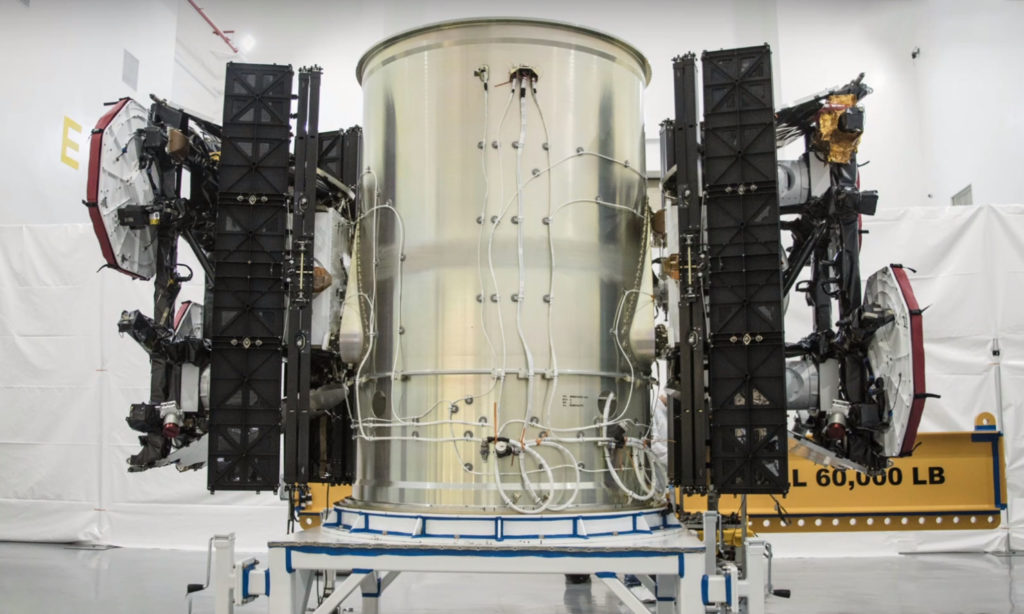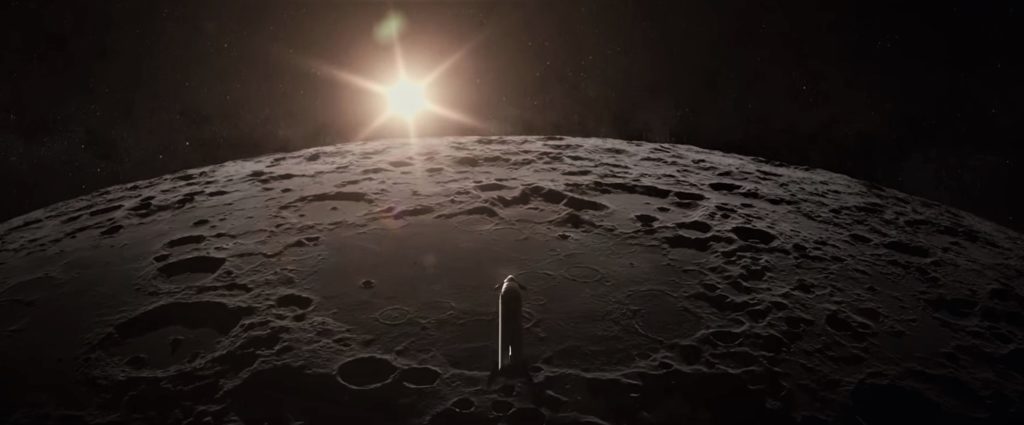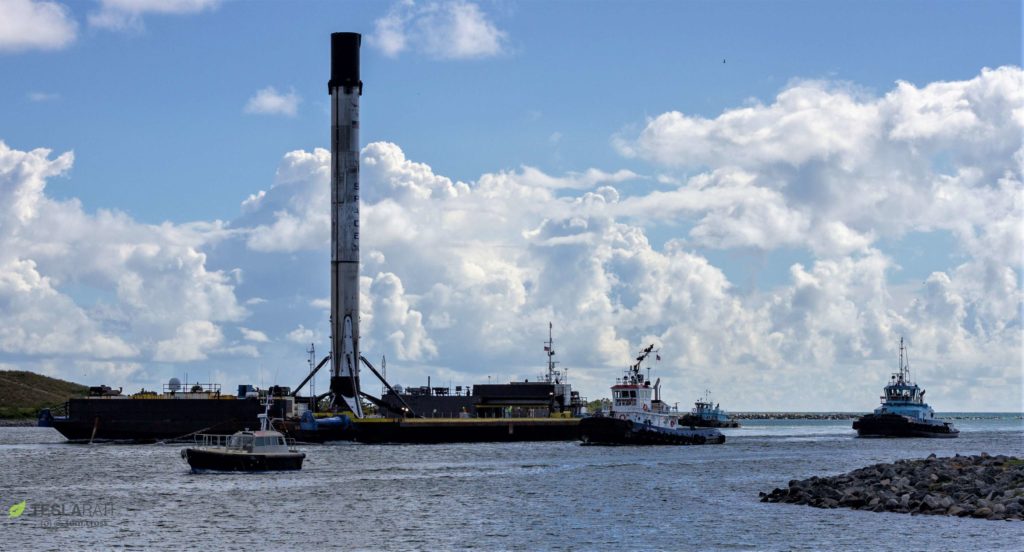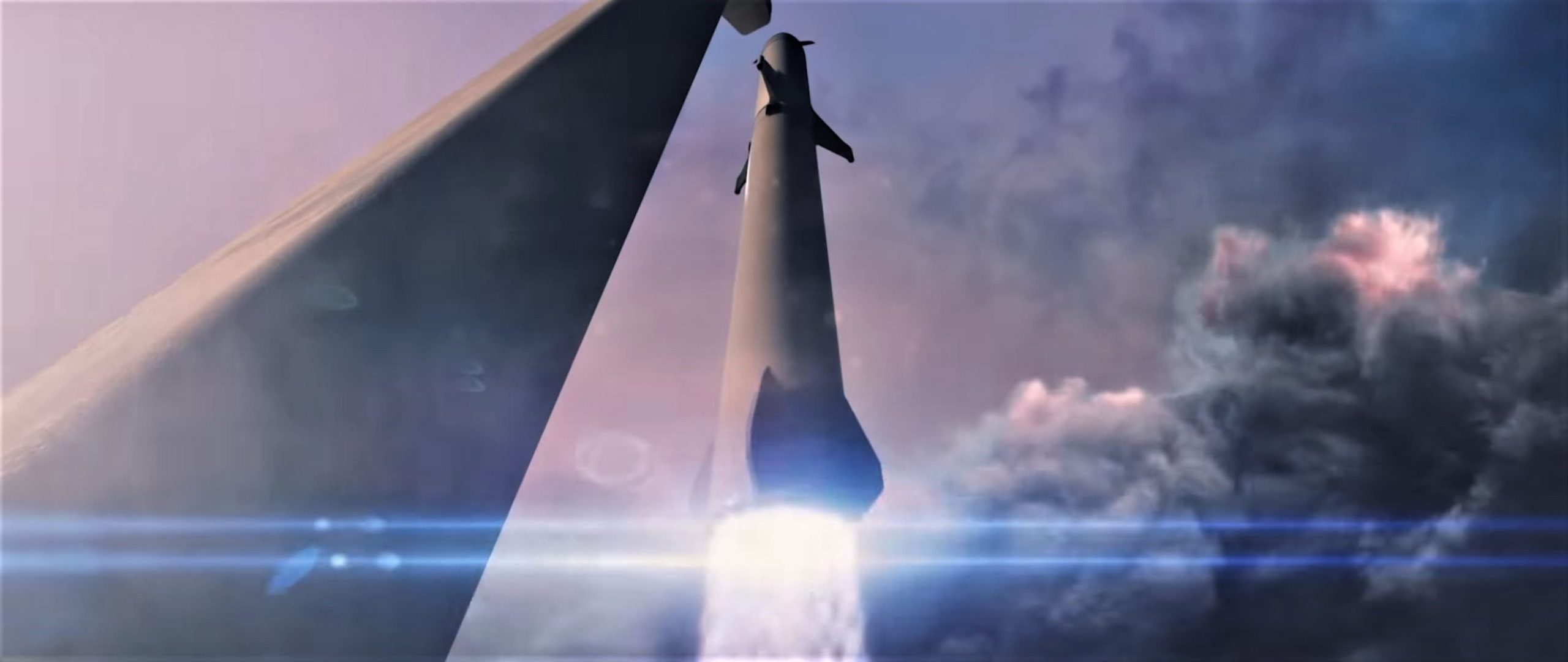
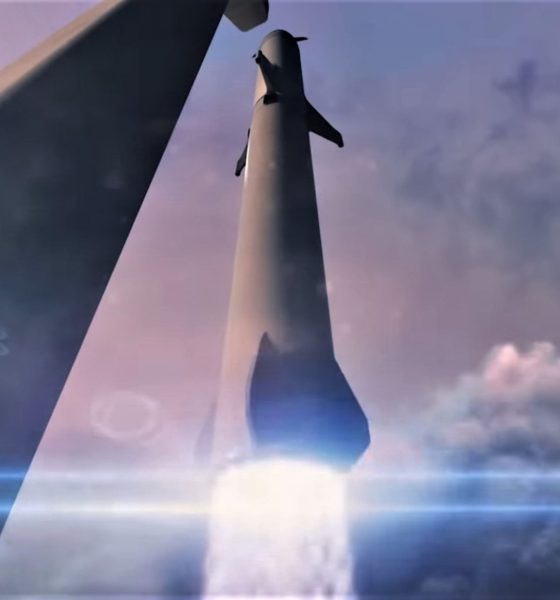
News
SpaceX to livestream private BFR Moon mission “in high-def VR” with Starlink satellites
Following a detailed update to SpaceX’s BFR plans and the first privately contracted mission to the Moon, CEO Elon Musk has tweeted that the company intends to stream the entire six-day journey in “high def VR”, a plan that would demand unprecedented communications capabilities between the Moon and the Earth.
Musk further confirmed that “Starlink should be active by [2023]”, suggesting – at a minimum – that the SpaceX-built and SpaceX-launched internet satellite constellation will have reached what is known as ‘initial operating capability’, pegged for Starlink at roughly 800 satellites launched.
Moon mission will be livestreamed in high def VR, so it’ll feel like you’re there in real-time minus a few seconds for speed of light
— Elon Musk (@elonmusk) September 18, 2018
No small task
To give some rough context for what Musk wants, streaming in high-enough quality for a good virtual reality (VR) experience on a deep space voyage around the Moon will demand a sea of bandwidth that’s difficult to find even on the surface of Earth, let alone in space. A 2017 estimate pegged the bandwidth requirements for 4K VR streaming around 300 megabits per second (Mbps), while a solution more fitting for five years of iterative improvement between now and 2023 might demand almost a magnitude greater bandwidth (~3000+ Mbps).
For context, the average American internet connection hovers around 15-20 Mbps while the average 4K YouTube video takes about 25 Mbps to stream, meaning that BFR’s communications link between the ~390,000 km (240,000 mi) Earth-Moon gap would need to be anywhere from 10 to more than 100 times faster than typical Earthly connectivity. While NASA has already completed a successful tech demonstration of laser communications from the Moon to the Earth, maxing out at a rather impressive ~620 Mbps in 2013, that one-off test concluded years ago, and there simply is no infrastructure available to achieve the sort of capabilities SpaceX will need to stream a lunar voyage in VR.
Starlink to the rescue
The only possible way SpaceX could accomplish this sort of technical feat is by having their own high-bandwidth satellite constellation at least partially operational, needs that mesh reasonably well SpaceX’s public planning schedule for their Starlink constellation. Speaking in late-2017, SpaceX VP of Satellite Government Affairs Patricia Cooper laid out a timeline that would see ~800 satellites launches sometime in the early 2020s, followed later by the remaining ~3600 spacecraft in the Phase 1 constellation. Those launches would take place between 2019 and 2024.
Since then, Musk has indirectly hinted that Starlink’s schedule has slipped or stretched 6-12 months, unsurprising for such a massive technical task at hand. This still leaves a fair amount of time for some sort of initial operational capability to be realized, even if it is little more than the skeleton necessary for Musk’s high-def VR-streaming ambitions. Although the tweet response that triggered it was deleted, Musk confirmed in the comments of his original tweet that Starlink would be the relay network of choice – having an Earth network already installed would certainly minimize the need for global ground stations to receive a BFR spaceship’s continuous lunar downlink.
Yeah, Starlink should be active by then
— Elon Musk (@elonmusk) September 18, 2018
Evidenced by previous comments from Musk and NASA execs expressing interest in developing a commercial communications relay between Earth and Mars, the thought is at least there that the Starlink satellite bus may sooner or later be called upon to serve as deep space communications relays throughout the solar system, beginning with the Moon and Mars.
- SpaceX’s first two Starlink prototype satellites are pictured here before their inaugural Feb. 2018 launch, showing off a utilitarian design. (SpaceX)
- SpaceX’s updated BFR spaceship seen cresting over the Moon’s limb. (SpaceX)
- Falcon 9 B1049 returns to Cape Canaveral, 09/12/18. (Tom Cross)
It’s possible that those distinct space environments would necessitate changes to the spacecraft’s hardware and software, but the fundamental goal of mass-producing Starlink satellites at an unprecedented scale and cost means that a few off-the-shelf satellites could plausibly be placed in relay positions under the assumption that they will die faster than those in Earth orbit. At just a few hundred kilograms apiece, Falcon 9 would have no problems launching a handful to the Moon or elsewhere, and they could potentially be included as copassengers on BFR launches, acting as a sort of a la carte communications relay for the spaceship.
Time will tell, but SpaceX fans certainly have an incredible amount of things to look forward too from the last 48 hours alone, regardless of whether the #dearMoon BFR mission’s 2023 launch target slips (spoiler: it probably will).
For prompt updates, on-the-ground perspectives, and unique glimpses of SpaceX’s rocket recovery fleet check out our brand new LaunchPad and LandingZone newsletters!

Elon Musk
Elon Musk just said some crazy stuff about the Tesla Roadster

Elon Musk appeared on the Moonshots podcast with Peter Diamandis today to discuss AGI, U.S. vs. China, Tesla, and some other interesting topics, but there was some discussion about the upcoming unveiling of the Roadster, the company’s electric supercar that will arrive several years after it was initially slated for release.
Musk made some pretty amazing claims about the Roadster; we already know it is supposed to be lightning-fast and could even hover, if Tesla gets everything to happen the way it wants to. However, the car has some pretty crazy capabilities, some of which have not even been revealed.
On the podcast, Musk said:
“This is not a…safety is not the main goal. If you buy a Ferrari, safety is not the number one goal. I say, if safety is your number one goal, do not buy the Roadster…We’ll aspire not to kill anyone in this car. It’ll be the best of the last of the human-driven cars. The best of the last.”
🚨 Elon on the Roadster unveiling, scheduled for April 1:
— TESLARATI (@Teslarati) January 6, 2026
Musk makes a good point: people who buy expensive sports cars with ridiculous top speeds and acceleration rates do not buy them to be safe. They hope they are safe in case of an emergency or crash, but safety is not at the forefront of their thoughts, because nobody buys a car thinking they’ll crash it.
The Roadster is truly going to push the limits and capabilities of passenger vehicles; there’s no doubt about that. Tesla plans to show off the new version car for the first time on April 1, and Musk has only hinted at what is possible with it.
Musk said back in November:
“Whether it’s good or bad, it will be unforgettable. My friend Peter Thiel once reflected that the future was supposed to have flying cars, but we don’t have flying cars. I think if Peter wants a flying car, he should be able to buy one…I think it has a shot at being the most memorable product unveiling ever. [It will be unveiled] hopefully before the end of the year. You know, we need to make sure that it works. This is some crazy technology in this car. Let’s just put it this way: if you took all the James Bond cars and combined them, it’s crazier than that.”
Production is set to begin between 12 and 18 months after the unveiling, which would put the car out sometime in 2027. Hopefully, Tesla is able to stay on track with the scheduling of the Roadster; many people have been waiting a long time for it.
News
Tesla launches hiring for Robotaxi program in its twentieth country
Overall, the hiring signals Tesla’s aggressive timeline for global dominance in autonomous mobility.

Tesla has launched a hiring initiative for its Robotaxi program in its twentieth country, as the company posted two new jobs in Thailand this week.
Tesla is hiring in Bangkok and Kowloon for the Vehicle Operator position, which is related to data collection, and is the first in Thailand, but the twentieth country overall, as the company tries to expand into other markets.
🚨 BREAKING: Tesla is hiring additional full-time Vehicle Operators in Bangkok, Thailand.
Previous openings were 6-month, part-time roles. These are equivalent to AI Safety Operator roles in the U.S. pic.twitter.com/R6LzoU1bos— Tesla Yoda (@teslayoda) January 5, 2026
Tesla has had active job postings for Vehicle Operator positions in the United States, India, Israel, Taiwan, Germany, the Czech Republic, Hungary, the UK, Finland, Switzerland, Sweden, the Netherlands, Austria, Spain, Norway, Italy, and Turkey in past listings.
These postings are not all currently available, likely because the roles have been filled.
Thailand is the most recent, and broadens the company’s potential path to expanding its ride-hailing program, which is only active in the United States in Austin, Texas, and the California Bay Area, so far.
These roles typically involve data collection, which assists in improving Autopilot and Full Self-Driving operation. Tesla’s self-driving programs utilize real-world data that is accumulated and stored, observing vehicle and traffic behavior, as well as tendencies that are performed by human drivers to help increase safety and overall performance.
Overall, the hiring signals Tesla’s aggressive timeline for global dominance in autonomous mobility. Although the company has several high-profile rivals and competitors in the field, it has established itself as a main player and a leader in the development of autonomous technology, especially in the U.S., as its FSD suite is refined on almost a weekly basis.
The Full Self-Driving suite is available in seven countries and territories currently, including the U.S., Canada, China, Mexico, Puerto Rico, Australia, and New Zealand. Its biggest goal for expansion is currently the European market, where regulatory hurdles have been the main bottleneck prolonging its launch on the continent.
Tesla has performed months of testing in various European countries, including France and Spain, and does have support in some areas from various regulatory agencies. However, the company is hoping to get through this red tape and offer its suite in Europe for the first time, hopefully this year.
News
Tesla China rolls out Model Y upgrades, launches low-interest financing
These strategies are aimed at improving the ownership experience and keeping vehicle pricing competitive in the world’s largest electric vehicle market.

Tesla has rolled out minor updates to the five-seat Model Y in China, upgrading the vehicle’s center display to a higher-resolution 16-inch 2K screen. The electric vehicle maker also introduced attractive financing options, including 7-year low-interest rates, to offset the new purchase tax on EVs.
These strategies are aimed at improving the ownership experience and keeping vehicle pricing competitive in the world’s largest electric vehicle market.
Five-seat Model Y gets larger, better display
With its recent update, all three variants of the five-seat Model Y now feature an upgraded 16-inch 2K resolution center display, which replaces the vehicle’s previous 15.4-inch 1080p panel. This screen was already used in the six-seat Model Y L, and it offered improved visual clarity. Tesla China has also updated the Model Y’s headliner to black, giving the vehicle a sleeker appearance.
Prices of the five-seat Model Y remain unchanged at RMB 263,500, RMB 288,500, and RMB 313,500 for the respective trims. This update enhances the cabin experience as domestic rivals are already adopting high-resolution screens. As noted in a CNEV Post report, some domestic automakers have begun rolling out vehicles equipped with 3K-resolution displays.
New financing offers
Tesla also launched ultra-long-term financing offers for its locally produced models in China, which include the Model 3 sedan, the five-seat Model Y, and the six-seat Model Y L, through January 31, 2026. The 7-year option features an annualized fee rate as low as 0.5%, which is equivalent to 0.98% interest. This is expected to save customers up to RMB 33,479 ($4,790) compared to standard rates.
A 5-year zero-interest plan is also available, and it has been extended to the Tesla Model Y L for the first time. These incentives help offset China’s new 5% purchase tax on New Energy Vehicles (NEVs) in 2026-2027. Some of Tesla’s rivals in China have announced in recent months that they would be covering the purchase tax owed by buyers early this year.
